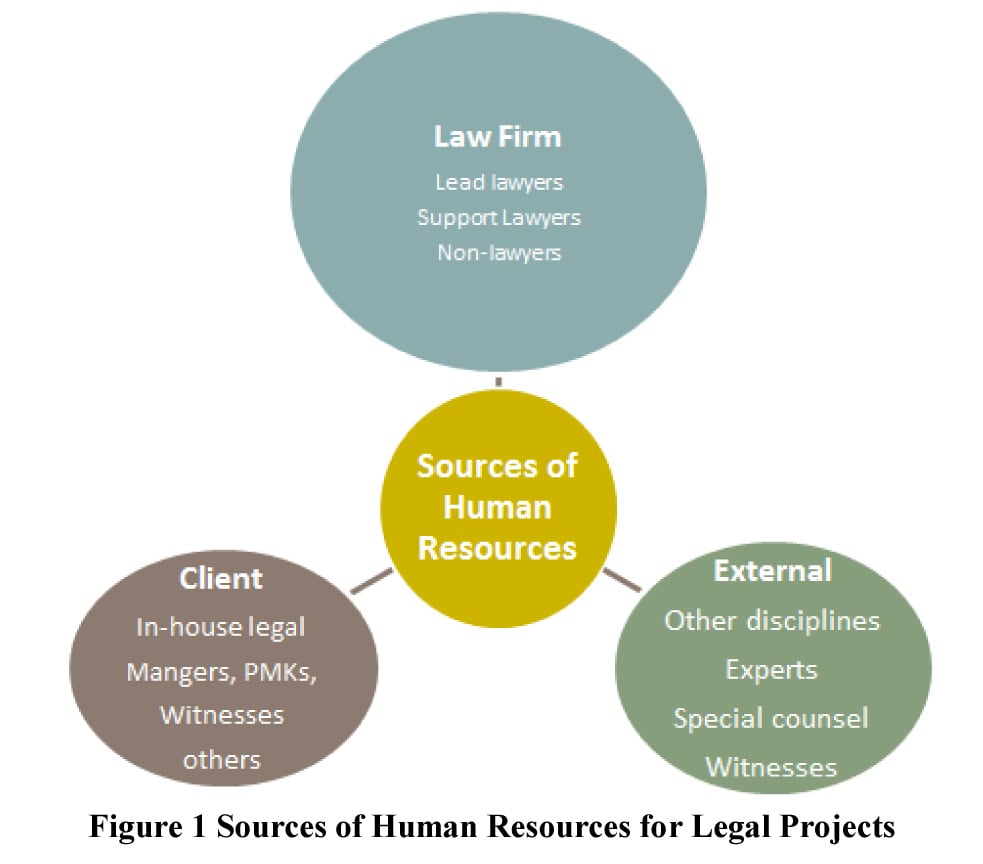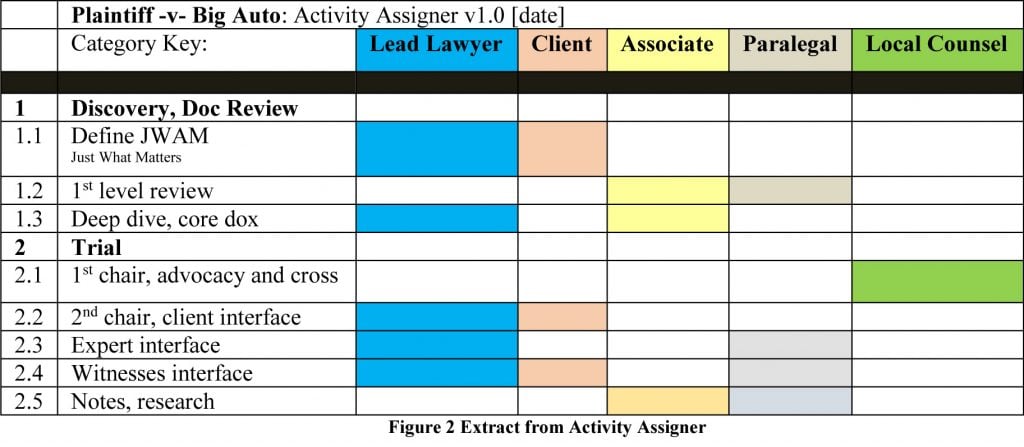Preparing a Budget Prevents Blindsiding
We need to start identifying and assigning resources to support our project. These resources are ‘human’ and ‘cash,’ and of course they are linked. With that thought as our starting point, we can set out everything needed in a resource budget. The client can then consider this and make an informed decision.
While this sounds obvious, we all know how often clients are unaware about the resources that will be required. Clients are either business owners or in-house counsel reporting to business owners. This is why they want price predictability and reliable service delivery. That doesn’t mean that law firms have to predict time of delivery and cost precisely. It means that clients want a reasonable estimate, based on data and experience, which they can take to the business and make the business case for investment.
Clients who are given a full, thought-out picture quite often take a step back at this juncture to consider and confer. Sometimes they take the plunge, in full knowledge of what they are letting themselves in for. Other times they decide against it. The client who pauses and says, “Really? Wow, we hadn’t realized … we need to think whether it’s worth doing” is precisely the client who would otherwise have been blindsided in the future.
Human Resources
In a legal project, labor cost is invariably the biggest resource requirement. So, let’s look at human resources first, and then we can look at finding the cash to pay for them. For a related tool see the Budgeting Checklist.
A lean, effective and efficient project team doesn’t come together by serendipity. It requires planning. Human resources will often come from three different sources: the law firm, the client and external. The law firm might supply a range of personnel, some of whom are not lawyers. The client might supply business managers, witnesses and persons of most knowledge (or PMKs). They might also lend legal support, which can be beneficial for a host of reasons. Finally, external sources might be used to supply advice in other disciplines such as tax and pensions in a transaction, or experts, independent witnesses and local counsel in a trial. The image below illustrates these sources:
Careful planning in this area is vital. This is not just because it informs resource budgeting, but because it goes to issues of feasibility, availability and even appetite. It is never too early to identify talent for the project and get those people committed.
There are a variety of methods and tools for this sort of planning. The essence is to chart the activities and allocate appropriate personnel to each. This sort of planning starts with a high level tool such as a ‘Task Assigner.’ To illustrate this, take the imaginary case of Plaintiff v. Big Auto. If we take just two examples of lawyer activity in a litigation project, discovery and trial, the tasks can be plotted on a Task Assigner grid, as seen below.
Extract from Task Assigner
In this way, the Task Assigner is a list of activities down one column, and the human resource categories across the top. Suppose, for example that for the trial it is planned to parachute in local counsel as first chair. That decision has been marked by the green block in line 2.1. That resource will then have to be identified, acquired and priced in.
This table is just an extract to illustrate the idea. This sort of table, and versions of it, is widely used by firms for planning trial and transactional work. It is usually done on a spreadsheet, to which names and other levels of detail can then be added. The point is this: If the law firm doesn’t have the appropriate resource, that will become immediately apparent. The word ‘appropriate’ is key here. It is a fundamental learning from the principles of lean not to deploy over-skilled people for any task. To do so is to create waste, which is a key concern of clients.
The legal market is now highly competitive and so law firms use a variety of creative methods to access legal resource. One example is outsourcing to lower overhead-cost locations, another is co-opting lawyers from the client’s own in-house community.
This is a good time to say a little more about the client as a resource. Collaboration with the client doesn’t end at confirming instructions and authorizing steps. In-house legal teams often supply staffers to join the project team. And then there are the business folks and the people connected to the project. If they are going to be part of the plan, then the client will have to permit access to the busy schedules of managers, witnesses and subject matter experts. If the client’s business is going to lose an individual to the project for any significant period of time, the lawyer can’t assume that this is going to be feasible and acceptable. Many a lawyer has gotten to a trial missing an expected witness. So long as the witness is identified at the right juncture, sought out by the lawyer and faithfully promised, then the lawyer will be blameless for the consequences of non-appearance. But otherwise, the lawyer is susceptible to blame and the firm is at unnecessary risk.
And of course human resources can be external, and the lawyer will need to find and manage those too. This part of the planning affects much more than budgets. Care needs to be given to identifying and securing appropriate talent. The mantra in manufacturing is to involve the supplier early in the process and this is worth remembering. These external resources should be secured as early as possible.
Then we introduce risk. Some external resources, like experts and local counsel, can be bought in. Others, like independent witnesses, cannot. This is why, in a litigation project, trial lawyers are cautious about embarking on any lawsuit which depends on witnesses over whom there is no influence or control, apart from charm and engagement. This is a vulnerability which should form part of the risk assessment. This is another good reason to do it sooner rather than later.
Financial Resources
Having identified the human requirement, we can think about cash. These days law firms have access to a number of sophisticated budgeting tools. These take account of anticipated lawyer time, advisers’ and experts’ fees and other costs. Many clients have come to expect that lawyers will undertake this level of budgeting because this enables them to make business case-based decisions.
REVIEW RELATED TOOLS:




















































 Copyright © 2025 ALM Global, LLC. All Rights Reserved.
Copyright © 2025 ALM Global, LLC. All Rights Reserved.